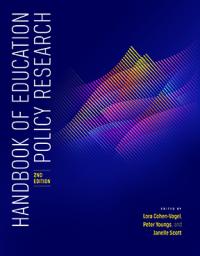Education Policy Research by, for, and With Indigenous Peoples in Canada, Mexico, and the United States
AERA members: Please enter your coupon code in the shopping cart coupon discount field.
Education Policy Research by, for, and With Indigenous Peoples in Canada, Mexico, and the United States
Teresa L. McCarty
Angelina E. Castagno
Regina Cortina
Michelle Pidgeon
Lorena Sánchez Tyson
Click here to view and purchase Handbook of Education Policy Research, 2nd Edition
Title information
Abstract
The authors offer a critical analysis of education policy research by, for, and with the approximately 34 million Indigenous People in the vast region occupied by Canada, Mexico, and the United States. In each nation-state, Indigenous Peoples have been planful about their continuance as Peoples despite colonization, including forced assimilation in state-sponsored schools. The authors anchor their analysis in three conceptual frameworks: Indigenous Knowledge and Education Systems; a sociocultural view of policy as processual and power-linked; and Safety Zone Theory (Lomawaima & McCarty, 2006). They first explore education policy within Indigenous Knowledge and Education Systems, then examine the historic and ongoing coloniality of power (Quijano, 2007). The heart of the chapter centers vital and growing Indigenous languages, cultures, and education resurgence movements. The authors conclude by considering the contemporary policy moment and paths forward in education policy research, practice, and praxis by, for, and with the Indigenous Peoples of this region.
Keywords: Indigenous education; Indigenous education policy; Indigenous Peoples in Canada, Mexico, and the United States; Safety/Sovereignty Zone Theory

